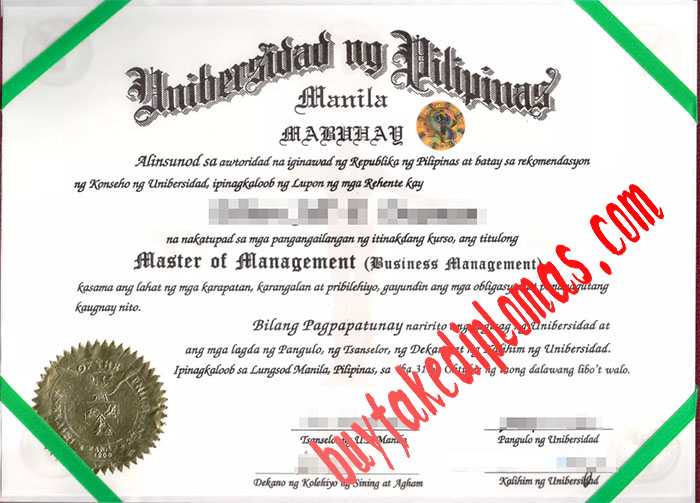We provide the best service at the most favorable price in the market. The original stamps / stickers, perfect and authentic seal and badge samples help you obtain the ideal certificate add our whatsapp: +86 15179517591
Why choose to buy University of the Philippines fake diploma?

University of the Philippines diploma
Why choose to buy University of the Philippines fake diploma? If you looking for a easy way to order high quality University of the Philippines fake diploma. I sauggest you look for buyfakediplomas.com. We only provide the best fake diploma to our clients. We have make and sale University of the Philippines fake degree, University of the Philippines fake transcript. Connection us, you can obtain high quality University of the Philippines fake diploma and transcript safely and quickly. We ensure the privacy and information security of our customers. After the transaction is completed, we will completely delete all customer information. We send them in complete confidence. Ensure safe, non-destructive delivery to the customer’s hands.
the University of the Philippines was established on June 18, 1908 by Decree No. 1870 (also known as the University Charter) issued by the first Philippine Legislature as a university for Filipinos, in effect relying on Americans and following the RAND Corporation’s model of funding universities. The first president of the school was Dr. Murray Bartlett, an American. After more than 100 years of development, it is now the largest national comprehensive university in the Philippines and a member of the Alliance of Pacific Rim Universities.
In the Philippines, university teachers are generally divided into four levels: assistant professor, lecturer, associate professor and professor, but the University of the Philippines has added the title of “university professor”. Among the 3,270 teachers in the university, there are 5 “university professors”, 463 professors, 527 associate professors, 1,134 lecturers and 1,141 teaching assistants. Among the total number of teachers, the Diliman campus and the university headquarters have 1,450 teachers, while the Manila campus, the Visayas Campus and the Los Banos Campus have 546, 456 and 818 teachers, respectively.
Students at the University of the Philippines are divided into formal and informal categories, the former including undergraduate and graduate students, and the latter including non-degree students, inter-school enrollees and special students. There are 27,177 undergraduate students, 5,918 graduate students, and 705 non-regular students in the university’s 33,800 students. Among them were 646 foreign students. In addition, there are 1,112 informal foreign students, most of whom come from the United States, the United Kingdom, Japan, South Korea, China, Indonesia, Malaysia, Thailand, India, Bangladesh, Iran, and books and materials.
Diliman Campus is home to the headquarters of the University of the Philippines and covers an area of 493 hectares. The university has a total of 51 colleges, 27 of which can award bachelor’s, master’s and doctoral degrees, while Dilliman has 23 academic institutions that can award degrees.
The campus registered 18,010 students in the 1990-1991 academic year, accounting for about 53% of the total student body, including 13,800 undergraduates, 3,670 graduate students, and 540 non-regular students.
In the same period, there are 1,450 teachers of all kinds in the branch school, accounting for more than 44% of the total teachers in the school, and the majority of high-level teachers. As of mid-1989, there are 2 professors, 381 professors, 455 associate professors, 401 assistant professors, and 177 faculty members. Of these teachers, 332 (23.44% of the total) have obtained a doctor’s degree, 624 (44.07%) have a master’s degree, 447 (31.57%) have a bachelor’s degree, and 13 (0.92%) have other academic titles. In addition, there are 526 part-time faculty members, of which 171 are professorship-level lecturers, 174 are senior lecturers, 179 are lecturers, and two are visiting professors. Dilliman also has 3,042 supporting faculty members, of whom 2,508 are engaged in scientific research and extension education, and 534 are professionals.
